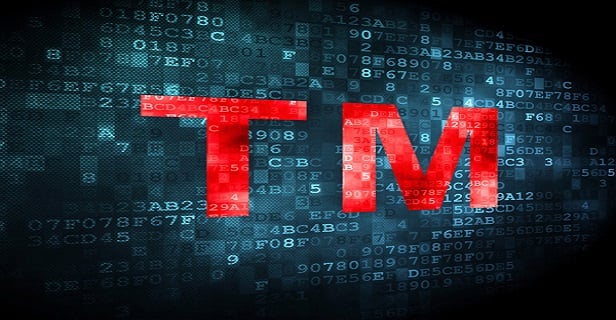Features

Quebec's Bill 96 and Trademarks: Product Packaging and Labelling
The modifications brought by the Quebec's Bill 96 will have a far-reaching impact on how businesses use trademarks on product packaging, labelling, public signage and in commercial advertising. This article is Part One of a two-part series on Bill 96 and trademarks and covers the effects as they relate to product packaging and labelling and how best to comply with these new provisions.
Features

Proper Notice of Trademark Rights: Using Trademark Symbols for Three-Dimensional Packaging and Product Designs
Among the most common questions trademark attorneys are asked is what the differences are between the symbols ®, TM, and SM. When should such symbols should be used? Where should they appear? How frequently? Do they even need to be used at all?
Features

Brands In the Metaverse: What You Need to Know
While it is still unknown how the metaverse will take shape, lawyers advising brands should familiarize themselves with the opportunities it presents, the risks involved, and strategies to consider for enhancing and protecting a client's brand.
Features

Trademark Oppositions and Coexistence Agreements
There are frequent battles over trademark rights in the entertainment industry. Trademark publication can be an anxious part of the federal application process, with fear of aggressive opposition and costly proceedings looming in the background. But many trademark oppositions, whether they are only threatened or actually filed, afford the applicant a discussion with an opposer that can ultimately be helpful in nonobvious ways.
Features

Trademark Coexistence May Become a Necessity As Market for Trademarks Grows
Trademark publication can be an anxious part of the application process, with fear of aggressive opposition and costly proceedings looming in the background. But many oppositions, whether they are only threatened or actually filed, afford the applicant a discussion with the opposer that can ultimately be helpful in nonobvious ways.
Features

Due Diligence Can Mitigate Trademark Risk
How can one launching a new trademark mitigate the risk of rejection or infringement on the basis of likelihood of confusion with an existing mark? The primary strategy is trademark searching.
Features

Reckless Disregard for the Truth of a Material Statement Made to the USPTO Is Sufficient for Proving the Intent to Deceive
The Trademark Trial and Appeal Board (TTAB) has finally filled a gap left by the U.S. Court of Appeals for the Federal Circuit in the standard for finding deceptive intent when trying to prove fraud on the USPTO.
Features

Trademarks Making Advertising Claims Create Sticky Situations
The SharkNinja case as well as other well-established precedents serve as powerful reminders to advertisers of certain best-practices in choosing their trademarks or evaluating whether to challenge their competitors' trademarks.
Features

Eighth Circuit Permits Recovery for 'Initial-Interest Confusion' In Trademark Cases
The likelihood of confusion analysis is often focused on confusion at the time of purchase, but the U.S. Court of Appeals for the Second, Third, Fifth, Sixth, Seventh, Ninth, Tenth and Federal Circuits permit mark holders to allege infringement based on presale, initial-interest confusion. Earlier this year, the Eighth Circuit joined the majority of circuits in permitting recovery for initial-interest confusion in certain circumstances.
Features

Tenth Circuit Adds to Split on Lanham Act's International Applicability
the Tenth Circuit held that the Lanham Act can have extraterritorial application, if certain conditions are met. In doing so, the appellate court recognized — and further deepened — an ongoing circuit split.
Need Help?
- Prefer an IP authenticated environment? Request a transition or call 800-756-8993.
- Need other assistance? email Customer Service or call 1-877-256-2472.
MOST POPULAR STORIES
- When Is a Repair Structural or Nonstructural Under a Commercial Lease?A common question that commercial landlords and tenants face is which of them is responsible for a repair to the subject premises. These disputes often center on whether the repair is "structural" or "nonstructural."Read More ›
- Beach Boys Songs Written Decades Ago Triggered Current Quarrel With LawyersThere's current litigation in the ongoing Beach Boys litigation saga. A lawsuit filed in 2019 against Nevada residents Mike Love and his wife Jacquelyne in the U.S. District Court for the District of Nevada that alleges inaccurate payment by the Loves under the retainer agreement and seeks $84.5 million in damages.Read More ›
- Supreme Court Rules Rejection of Trademark License Does Not Rescind Rights of LicenseeMission Product Holdings, Inc. v. Tempnology, LLC The question is whether a debtor's rejection of its agreement granting a license "terminates rights of the licensee that would survive the licensor's breach under applicable nonbankruptcy law."Read More ›
- Strategy vs. Tactics: Two Sides of a Difficult CoinWith each successive large-scale cyber attack, it is slowly becoming clear that ransomware attacks are targeting the critical infrastructure of the most powerful country on the planet. Understanding the strategy, and tactics of our opponents, as well as the strategy and the tactics we implement as a response are vital to victory.Read More ›
- Recently Introduced Bill Would Limit ITC 'Domestic Industry by Subpoena'Patent infringement disputes in the United States are not only heard in district courts. The U.S. International Trade Commission (ITC) also decides high-stakes intellectual property disputes — with the remedy for the IP rights holder not being damages, but rather an exclusion order that can block a competitor's importation of infringing articles into the U.S. That remedy can be incredibly powerful for companies engaged in stiff competition in the U.S. market.Read More ›
